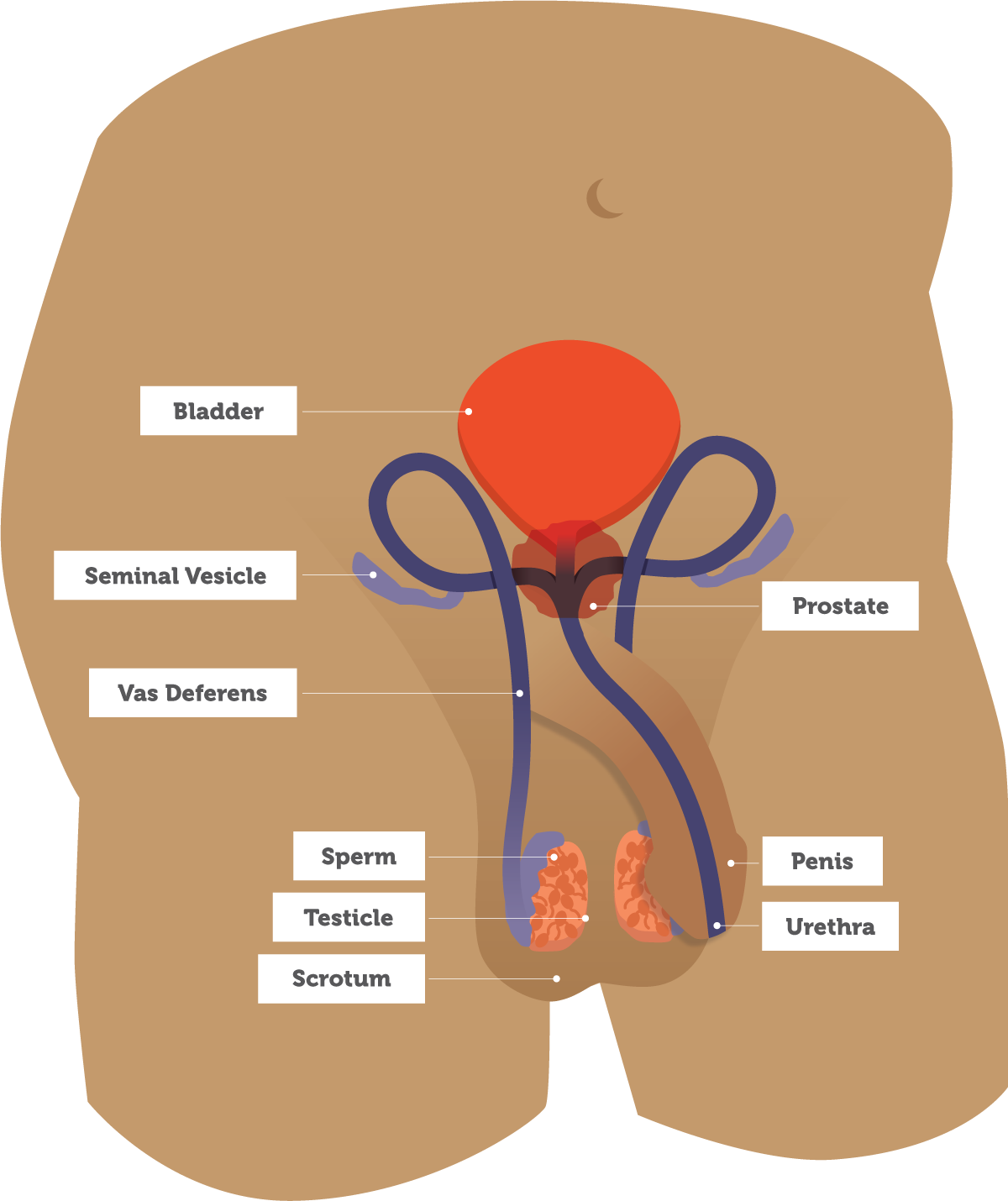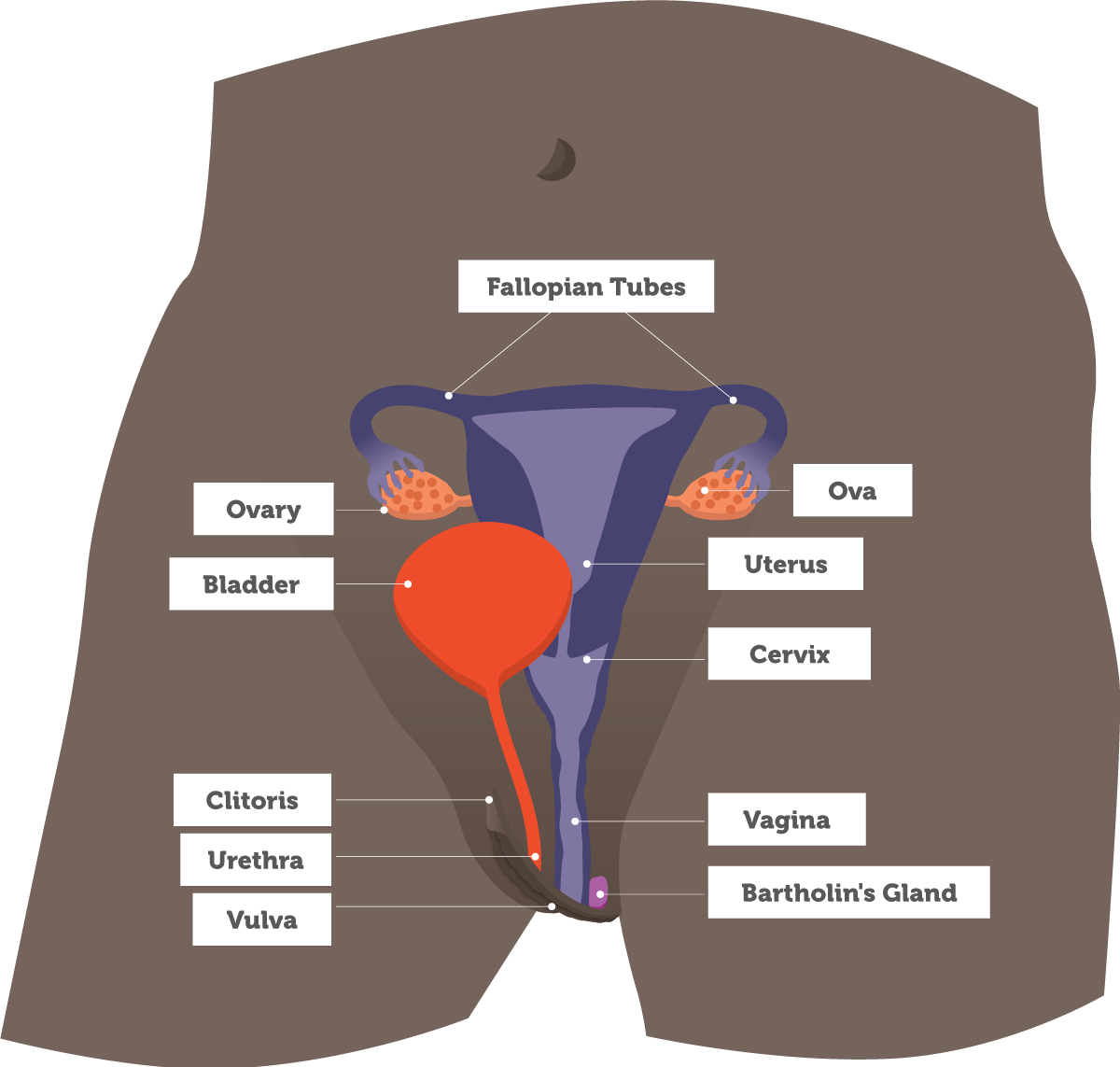Reproduction, contraception & sexual health
This page shares information that may be useful to know when exploring how contraceptives work. Reproduction, contraception, and sexual health involves a number of organs.
Whilst these reproductive systems are commonly known as female and male reproductive systems, all bodies are different. The information about reproductive systems may not be true for all, for example, people who are transgender or intersex. Some people may also have injuries or disabilities which could affect their reproductive system.
Reproductive Organs
These organs contribute to feelings of sexual attraction and pleasure. They may be used for personal masturbation or during consensual and intimate sexual activities with other people.
These organs can also support human reproduction. They can make, store, and move gametes. Gametes are reproductive cells. Female reproductive system gametes are eggs (ova). Male reproductive system gametes are sperm. When a sperm joins with an egg, the egg can be fertilised and an embryo forms. This is called reproduction. Providing both people are healthy, the embryo may grow to be a foetus and eventually a baby.
The ovaries are located on opposite sides in the pelvic area. They produce hormones and store eggs (ova). Eggs are reproductive cells (gametes) stored in the ovaries.
Eggs (or ova) are reproductive cells stored in the ovaries. Female babies are born with about 1 million eggs, which gradually dissolve into the blood stream throughout life. From menarche (puberty) onwards, usually one egg (or ovum) is released by the ovaries every month during a process called ovulation.
Fallopian tubes connect the two ovaries to the uterus. Eggs travel through the fallopian tubes to the uterus.
The uterus is also known as the womb.
If the egg has been fertilised by a sperm, it forms an embryo which travels along the fallopian tubes to the uterus. The embryo would then e supplied with blood and may develop into a foetus and eventually a baby.
If the egg has not been fertilised, or if it has not implanted in the wall of the uterus, a menstrual bleed occurs. If it implants but then fails that is called a miscarriage – even if it occurs at the time menstruation is expected.
The menstrual period is when the female reproductive system sheds the uterus lining and occurs every 3-5 weeks. The process involves 2-7 days of menstrual bleeding. The uterus lining is a mixture of blood, tissue and mucus, known as the endometrium. It exits the uterus through the cervix and then the vagina. Afterwards the lining in the uterus will start building up again.
The cervix is the entrance of the uterus that opens into the vagina. It provides a channel for menstrual blood to flow from the uterus into the vagina. The cervix produces lubricating mucus that changes according to fertile and infertile times in your ovarian cycle to assist or hinder the passage of sperm into the uterus and fallopian tubes.
During birthing, the cervix opens to allow the baby to pass from the uterus to the vagina.
The vagina is a muscular tube that joins the cervix to the vulva. The vagina produces fluid when stimulated. It is where mucus and menstrual blood exits the body. If a birth does not have complications, a baby can be born through the vagina.
The bartholin's glands are located on each side of the vagina opening. These glands produce fluid that lubricates the vagina.
The urethra is a tube that joins the bladder to an opening between the clitoris and the vaginal opening. It allows urine (wee) to exit from the bladder to leave the body.
The clitoris is located both externally and internally. Externally, the clitoral glans is located above the urethra. Internally, the clitoris wraps around the vagina. The clitoris becomes enlarged during sexual stimulation
The vulva is the name given to the external female genital organs. At the top of the vulva is the mons pubis. Below the mons pubis there are folds of skin called the labia majora (outer lips) and labia minora (inner lips). Labia become enlarged during sexual stimulation.

Testicles are located inside a pouch of skin called the scrotum. They produce hormones and sperm.
Sperm are reproductive cells (gametes). They are produced in testicles.
The scrotum is the pouch of skin covering and protecting the testicles. The scrotum keeps the sperm healthy.
The vas deferens are tubes that transport sperm. As the sperm travel they are mixed with semen.
Semen (or seminal fluid or cum) is produced by the seminal vesicle, bulbourethral and prostate glands. Semen protects sperm, allowing them to survive and travel once ejaculated from the penis. Semen and sperm are ejaculated at the same time through the penis.
The penis is made up of four parts – the base, body (shaft), glans (head), and foreskin. Both the base and the body become erect during sexual simulation.
The urethra is a tube that joins the bladder to an opening at the end of the penis. It allows urine (wee) to exit from the bladder to leave the body. During sexual activity sperm moves through the vas deferens, mixes with seminal fluid from seminal vesicles, and continues through the prostate to the urethra. From the urethra it is propelled out of the opening at the end of the penis. This process is called ejaculation. Urine cannot exit at the same time as semen and sperm.
Intersex Reproductive Organs and Sexual Health
Intersex people have innate sex characteristics (such as chromosomes, gonads, reproductive development or hormones) that don’t fit medical norms for female or male bodies. Intersex people risk stigmatisation, discrimination and harm because their bodies are seen as different. Find out more from Intersex Human Rights Australia: https://ihra.org.au.
Depending on which reproductive body parts a person has, sperm or eggs may be present. Pregnancy may also be possible.
Reproductive Choices
Everyone has reproductive choices. Some people may:
- choose to use contraception to prevent them from reproducing during sexual activities
- reproduce during sexual activities and choose to remain pregnant
- reproduce during sexual activities and choose to have an abortion (also called a termination)
- experience difficulty fertilising an egg with a sperm. It could be an issue with the male or female organs, or both
- choose to use assisted reproductive technology options. There are numerous alternative methods to fertilise an egg, for example intrauterine insemination or in vitro fertilisation (IVF)
- want to support children in other ways, such as adopting a child, fostering, volunteering or working with children or babysitting
- not want children in their lives at all
You can make an appointment with a Reproductive and Sexual health Clinic to discuss your reproductive choices.
Reproduction and Contraception
Reproduction occurs when sperm reaches and fertilises an egg, through sexual intercourse.
Sperm can travel from any part of the vagina up through the cervix and into the uterus and fallopian tubes.
Contraceptives work in various ways to stop sperm from reaching and fertilising eggs.
People may use contraceptives because they may:
- want to delay parenting
- already have children and want to plan for an age gap between children
- already have children and do not want more
- want to look at adopting or fostering future children
- not want children at all
- want to prevent sexually transmitted infections (STIs)
- want to reduce heavy menstrual bleeding
You can read more about your contraceptive choices and visit a Reproductive and Sexual Clinic for a contraceptive consultation.




